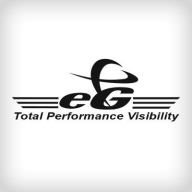

eG Enterprise and Grafana are both respected options in IT monitoring and data visualization. Grafana is often favored for its advanced features, while eG Enterprise is praised for its inclusive monitoring capabilities and customer support.
Features: eG Enterprise offers comprehensive monitoring including application performance monitoring and infrastructure management. Grafana provides extensive visualization options and dashboard customization capabilities.
Room for Improvement: eG Enterprise could improve its reporting capabilities and configuration settings. Grafana needs easier setup and better default dashboards.
Ease of Deployment and Customer Service: eG Enterprise deployment is appreciated for its professional support and guided implementation process. Grafana deployment is straightforward due to its open-source nature but lacks dedicated support.
Pricing and ROI: eG Enterprise has a clear pricing model and users find the ROI worth the investment. Grafana, being open-source, offers a lower entry cost and value through customizability and plugins.


eG Enterprise is a comprehensive performance monitoring tool that monitors applications, infrastructure, and networks. eG Enterprise offers a complete performance management solution that delivers diagnosis and automated IT auditing, and offers extensive reporting to test application latencies, storage hotspots, network failures, server incompetencies, bottlenecks, user experience (UX) concerns, and more.
eG Enterprise monitors an organization’s total IT ecosystem and applications throughout every layer and all tiers and will take a deep dive to discover where a problem began, faster than any other solution. eG Enterprise is a complete solution that thoroughly monitors the end-user relationship for just about every IT deployment available, such as cloud-based microservices applications, enterprise applications, on-premise monolithic applications, and digital workspaces.
eG Enterprise is a flexible solution and can be deployed in various circumstances, wherever the digital experience of the user needs to be managed and IT infrastructures and applications need to be monitored. eG Enterprise is effective from legacy on-premise deployments to the most cloud-centric ecosystem in the marketplace today.
eG Enterprise Features
Reviews from Real Users
“The product makes data collection easy. It's simple to set up. The algorithm is the most valuable aspect of the solution. In a few minutes after the installations, we can get insights from my technical environment. After a few minutes, I can get some valuable insights to make decisions.” - Anderson L., LatAm Presales Analyst at CLM
“Some of the best features of eG are, in terms of APM, they have complete modules between application performance monitoring, server monitoring, and even storage and network-based monitoring. The UI is also quite good. They have some standard AI-based capabilities, even though it's not quite as advanced when compared to Dynatrace. eG has some good, basic APM capabilities.” - A PeerSpot user who is a Consultant at a tech services company
Grafana is an open-source visualization and analytics platform that stands out in the field of monitoring solutions. Grafana is widely recognized for its powerful, easy-to-set-up dashboards and visualizations. Grafana supports integration with a wide array of data sources and tools, including Prometheus, InfluxDB, MySQL, Splunk, and Elasticsearch, enhancing its versatility. Grafana has open-source and cloud options; the open-source version is a good choice for organizations with the resources to manage their infrastructure and want more control over their deployment. The cloud service is a good choice if you want a fully managed solution that is easy to start with and scale.
A key strength of Grafana lies in its ability to explore, visualize, query, and alert on the collected data through operational dashboards. These dashboards are highly customizable and visually appealing, making them a valuable asset for data analysis, performance tracking, trend spotting, and detecting irregularities.
Grafana provides both an open-source solution with an active community and Grafana Cloud, a fully managed and composable observability offering that packages together metrics, logs, and traces with Grafana. The open-source version is licensed under the Affero General Public License version 3.0 (AGPLv3), being free and unlimited. Grafana Cloud and Grafana Enterprise are available for more advanced needs, catering to a wider range of organizational requirements. Grafana offers options for self-managed backend systems or fully managed services via Grafana Cloud. Grafana Cloud extends observability with a wide range of solutions for infrastructure monitoring, IRM, load testing, Kubernetes monitoring, continuous profiling, frontend observability, and more.
The Grafana users we interviewed generally appreciate Grafana's ability to connect with various data sources, its straightforward usability, and its integration capabilities, especially in developer-oriented environments. The platform is noted for its practical alert configurations, ticketing backend integration, and as a powerful tool for developing dashboards. However, some users find a learning curve in the initial setup and mention the need for time investment to customize and leverage Grafana effectively. There are also calls for clearer documentation and simplification of notification alert templates.
In summary, Grafana is a comprehensive solution for data visualization and monitoring, widely used across industries for its versatility, ease of use, and extensive integration options. It suits organizations seeking a customizable and scalable platform for visualizing time-series data from diverse sources. However, users should be prepared for some complexity in setup and customization and may need to invest time in learning and tailoring the system to their specific needs.
We monitor all Application Performance Monitoring (APM) and Observability reviews to prevent fraudulent reviews and keep review quality high. We do not post reviews by company employees or direct competitors. We validate each review for authenticity via cross-reference with LinkedIn, and personal follow-up with the reviewer when necessary.